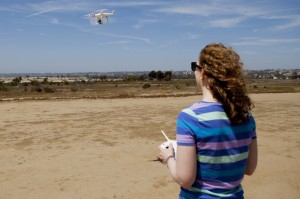(Source: Forbes)
 In a sign that the FAA is intensifying its enforcement focus on drone operators, the FAA issued new guidance (Change 6 to its Compliance and Enforcement Handbook) last week to its inspectors and attorneys applicable to Unmanned Aircraft Systems “in violation of the Federal Aviation Regulations” and Model Aircraft “that endangers the safety of the National Airspace System.”
In a sign that the FAA is intensifying its enforcement focus on drone operators, the FAA issued new guidance (Change 6 to its Compliance and Enforcement Handbook) last week to its inspectors and attorneys applicable to Unmanned Aircraft Systems “in violation of the Federal Aviation Regulations” and Model Aircraft “that endangers the safety of the National Airspace System.”
According to the FAA, the enforcement bulletin was issued because: ”there is an increasing number of UAS operations conducted in the United States that are operated contrary to applicable statutory and regulatory requirements. These operations may create unacceptable levels of safety risk in the National Airspace System (NAS). Based on the FAA’s growing concern about the safety of UAS operations in the United States, the FAA will use its resources to educate UAS operators about regulatory compliance and, when appropriate, use administrative and legal enforcement action to gain compliance.”
The new enforcement guidance outlines the following sanction considerations:
- Whether the violation was a first-time and inadvertent violation;
- Whether the violation involves repeated or intentional violations; and
- Whether the safety risk resulting from the operation in terms of actual or potential endangerment to the NAS was low/medium/high.
The FAA’s enforcement bulletin states that “a violation that poses a medium actual or potential risk to safety generally warrants a civil penalty in the minimum to moderate range.” However, certificated pilots beware, the FAA’s guidance has a footnote “a certificate holder should appreciate the potential for endangerment that operating a UAS contrary to the FAA’s safety regulations may cause. Accordingly, a violator’s status as a certificate holder is an aggravating factor that may warrant a civil penalty above the moderate range for a single, first-time, inadvertent violation.”
A violation that poses a high actual or potential risk to safety generally warrants a civil penalty in the maximum range and repeated or intentional violations generally warrant a civil penalty in the applicable maximum range. The sanction ranges for individuals acting as pilots or in the capacity of pilots, according to the FAA’s sanction guidance table, are as follows:
Maximum $850-$1,100
Moderate $650-$849
Minimum $500-$649
However, according to former FAA Regional Counsel, Loretta Alkalay (and my co-professor at Vaughn College of Aeronautics), it’s important to note that the “FAA considers each operation a separate violation and any operation could include multiple regulatory violations. So the amount the FAA seeks against an individual for any given flight could be significantly more than the amounts listed here.”
In addition, drone pilots who hold airmen certificates are at particular risk, especially if they fly manned aircraft for a living. According to the new guidance: “For a deliberate, egregious violation by a certificate holder, regardless of whether the certificate holder is exercising the privileges of the certificate in connection with the violations associated with a UAS operation, certificate action, may be appropriate. Such certificate action may be in addition to a civil penalty.” This means that a model aircraft operator may put his professional license at risk – even though no license is required to fly a model aircraft – if the FAA decides that his or her conduct is egregious enough.
Continue Reading at Forbes.com…
Alan is serial entrepreneur, active angel investor, and a drone enthusiast. He co-founded DRONELIFE.com to address the emerging commercial market for drones and drone technology. Prior to DRONELIFE.com, Alan co-founded Where.com, ThinkingScreen Media, and Nurse.com. Recently, Alan has co-founded Crowditz.com, a leader in Equity Crowdfunding Data, Analytics, and Insights. Alan can be reached at alan(at)dronelife.com







Wow, that’s a really clever way of thinking about it!
That’s really thinking out of the box. Thanks!
thanks, but there are a number of prlobems. Polarized glasses work only against certain types of polarization such as horizontal, vertical or circular. Laser light hitting the cockpit windscreen would be randomly polarized. Also, polarized glasses may make cockpit instruments harder to see. Try wearing polarized glasses and look at various LCD display screens. Finally, pilots are not going to want to routinely wear glasses just because 1 in every 15,000 flights is lased.